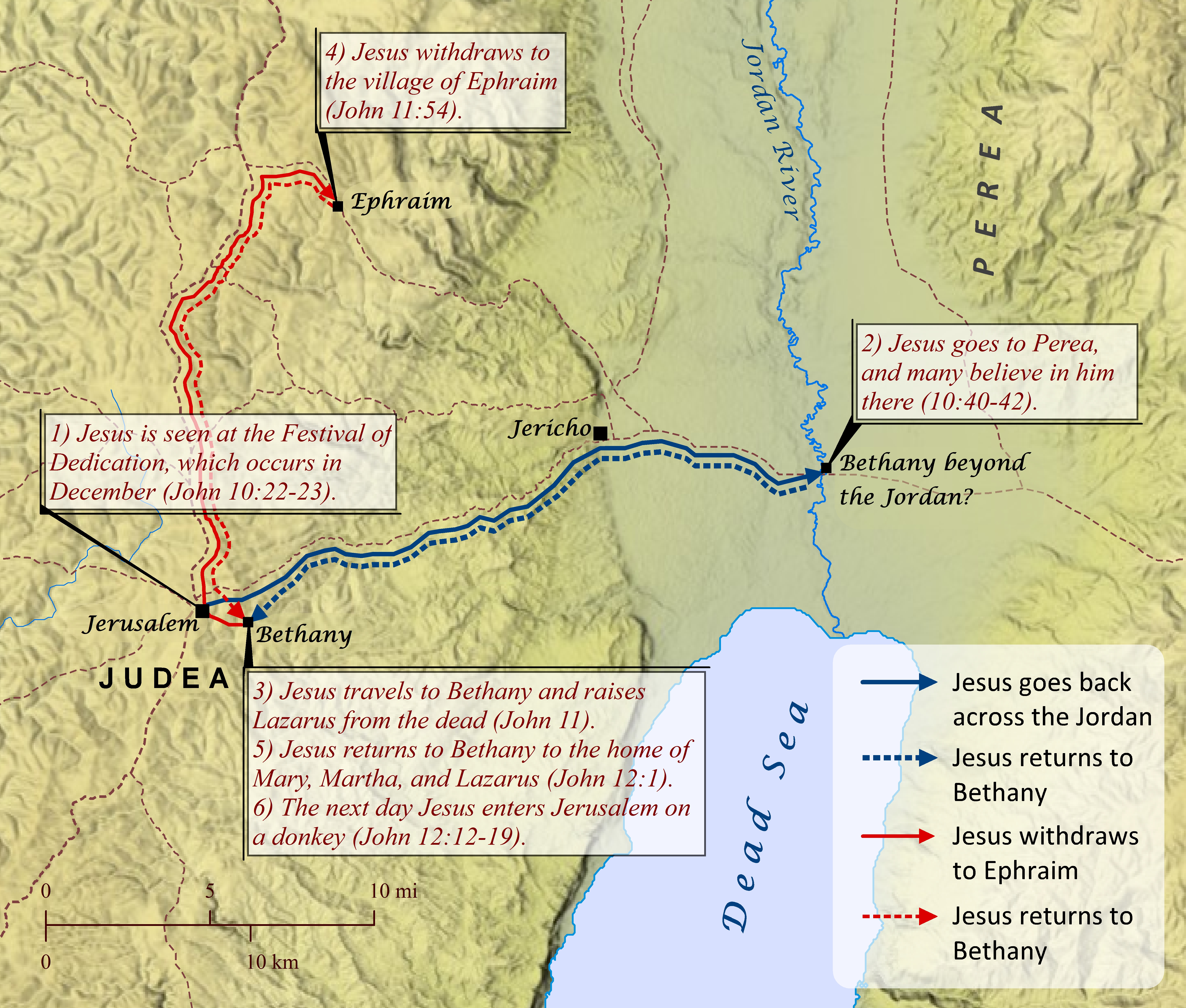Note: This view shows ‘verses’ which are not natural language units and hence sometimes only part of a sentence will be visible—click on any Bible version abbreviation down the left-hand side to see the verse in more of its context. Normally the OET discourages the reading of individual ‘verses’, but this view is only designed as a tool for doing comparisons of different translations—the older translations are further down the page (so you can read up from the bottom to trace the English translation history). The OET segments on this page are still very early looks into the unfinished texts of the Open English Translation of the Bible—please double-check these texts in advance before using in public.
AICNT And he said, “Where have you laid him?” They said to him, “Lord, come and see.”
OEB ‘Where have you buried him?’ he asked. ‘Come and see, Master,’ they answered.
WEBBE and said, “Where have you laid him?”
¶ They told him, “Lord, come and see.”
WMBB (Same as above)
NET He asked, “Where have you laid him?” They replied, “Lord, come and see.”
LSV “Where have you laid him?” They say to Him, “Lord, come and see”;
FBV “Where have you laid him?” he asked.
¶ They replied, “Lord, come and see.”
TCNT He said, “Where have you laid him?” They said to him, “Lord, come and see.”
T4T He said, “Where have you buried ◄him/his body►?” They said to him, “Lord, come and see.”
LEB And he said, “Where have you laid him?” They said to him, “Lord, come and see.”
BBE And said, Where have you put him? They said, Come and see, Lord.
Moff "Where have you laid him?" he asked. They answered, "Come and see, sir."
Wymth though deeply troubled, asked them, "Where have you laid him?" "Master, come and see," was their reply.
ASV and said, Where have ye laid him? They say unto him, Lord, come and see.
DRA And said: Where have you laid him? They say to him: Lord, come and see.
YLT 'Where have ye laid him?' they say to him, 'Sir, come and see;'
Drby and said, Where have ye put him? They say to him, Lord, come and see.
RV and said, Where have ye laid him? They say unto him, Lord, come and see.
(and said, Where have ye/you_all laid him? They say unto him, Lord, come and see. )
SLT And said, Where have ye laid him? They say to him, Lord, come and see.
Wbstr And said, Where have ye laid him? They say to him, Lord, come and see.
KJB-1769 And said, Where have ye laid him? They said unto him, Lord, come and see.
(And said, Where have ye/you_all laid him? They said unto him, Lord, come and see. )
KJB-1611 And said, Where haue ye laid him? They say vnto him, Lord, come, & see.
(And said, Where have ye/you_all laid him? They say unto him, Lord, come, and see.)
Bshps And sayde: Where haue ye layde him? They sayde vnto hym: Lorde, come, and see.
(Modernised spelling is same as from KJB-1769 above, apart from punctuation)
Gnva And saide, Where haue ye layde him? They said vnto him, Lord, come and see.
(And said, Where have ye/you_all laid him? They said unto him, Lord, come and see. )
Cvdl & sayde: Where haue ye layed him? They sayde: LORDE come, & se it.
(and said: Where have ye/you_all laid him? They said: LORD come, and see it.)
TNT Where have ye layed him? They sayde vnto him: Lorde come and se.
(Where have ye/you_all laid him? They said unto him: Lord come and see. )
Wycl and seide, Where han ye leid hym? Thei seien to hym, Lord, come, and se.
(and said, Where have ye/you_all leid him? They said to him, Lord, come, and see.)
Luth und sprach: Wo habt ihr ihn hingelegt? Sie sprachen zu ihm: HErr, komm und sieh es!
(and spoke: Where have you(pl)/their/her him/it hingelegt? They/She said to/for him: LORD, come and sieh it!)
ClVg et dixit: Ubi posuistis eum? Dicunt ei: Domine, veni, et vide.[fn]
(and he_said: Where you_puts him? Sayunt to_him: Master, I_came, and see. )
UGNT καὶ εἶπεν, ποῦ τεθείκατε αὐτόν? λέγουσιν αὐτῷ, Κύριε, ἔρχου καὶ ἴδε.
(kai eipen, pou tetheikate auton? legousin autōi, Kurie, erⱪou kai ide.)
SBL-GNT καὶ εἶπεν· Ποῦ τεθείκατε αὐτόν; λέγουσιν αὐτῷ· Κύριε, ἔρχου καὶ ἴδε.
(kai eipen; Pou tetheikate auton; legousin autōi; Kurie, erⱪou kai ide.)
RP-GNT καὶ εἶπεν, Ποῦ τεθείκατε αὐτόν; Λέγουσιν αὐτῷ, Κύριε, ἔρχου καὶ ἴδε.
(kai eipen, Pou tetheikate auton; Legousin autōi, Kurie, erⱪou kai ide.)
TC-GNT καὶ εἶπε, Ποῦ τεθείκατε αὐτόν; Λέγουσιν αὐτῷ, Κύριε, ἔρχου καὶ ἴδε.
(kai eipe, Pou tetheikate auton; Legousin autōi, Kurie, erⱪou kai ide. )
Key for above GNTs: yellow:punctuation differs, red:words differ (from our SR-GNT base).
